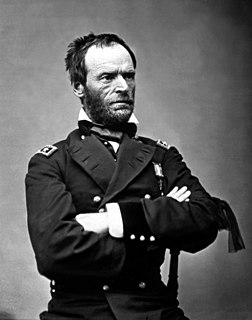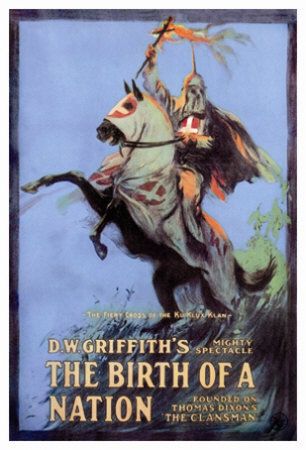
Monroe is a city in and the county seat of Union County, North Carolina, United States. The population increased from 26,228 in 2000 to 32,797 in 2010. It is within the rapidly growing Charlotte-Gastonia-Rock Hill, NC-SC Metropolitan area. Monroe has a council-manager form of government.
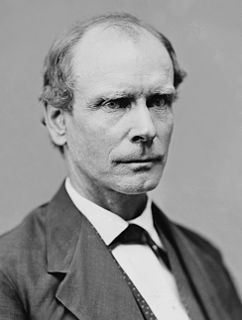
Amos Tappan Akerman served as United States Attorney General under President Ulysses S. Grant from 1870 to 1871. A native of New Hampshire, Akerman graduated from Dartmouth College in 1842 and moved South, where he had most of his career. He first worked as headmaster of a school in North Carolina and as a tutor in Georgia. Having become interested in law, Akerman studied and passed the bar in Georgia in 1850; where he and an associate set up a law practice. He also owned a farm and eleven slaves. When the Civil War started in 1861, Akerman joined the Confederate Army, where he achieved the rank of colonel.
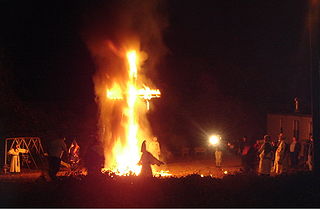
Cross burning or cross lighting is a practice associated with the Ku Klux Klan, although the historical practice long predates the Klan's inception–as far back as Peter of Bruys (1117–1131), who burned crosses in protest at the veneration of crosses. In the early 20th century, the Klan burned crosses on hillsides or as a means of intimidating people they saw as targets.
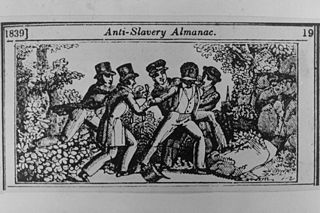
Slave patrols called patrollers, patterrollers, pattyrollers or paddy rollers, by the slaves, were organized groups of predominantly white men who monitored and enforced discipline upon black slaves in the antebellum U.S. southern states. The slave patrols' function was to police slaves, especially runaways and defiant slaves. They also formed river patrols to prevent escape by boat. Slave patrols were first established in South Carolina in 1704, and the idea spread throughout the colonies.

Joseph Hayne Rainey was an American politician. He was the first black person to serve in the United States House of Representatives, the second biracial person to serve in the United States Congress, and the first biracial presiding officer of the House of Representatives. Born into slavery in South Carolina, he was freed in the 1840s by his father purchasing the freedom of his entire family and himself. Revels and Rainey were both members of the Republican Party.

The Clansman: A Historical Romance of the Ku Klux Klan is a novel published in 1905. It was the second work in the Ku Klux Klan trilogy by Thomas F. Dixon Jr. that also included The Leopard's Spots and The Traitor. It presents the Ku Klux Klan heroically. The novel was twice notably adapted, immediately by its author as a highly successful play entitled The Clansman (1905), and a decade later by D. W. Griffith in the famous 1915 movie The Birth of a Nation. The 20th-century revival of the Ku Klux Klan is a direct result of its glorification by Dixon.
James William "Catfish" Cole (1924–1967) was a leader of the Ku Klux Klan of North Carolina and South Carolina. He called himself a Grand Dragon.
The Red Shirts or Redshirts of the Southern United States were white supremacist paramilitary terrorist groups that were active in the late 19th century in the last years of, and after the end of, the Reconstruction era of the United States. Red Shirt groups originated in Mississippi in 1875, when Democratic Party private terror units adopted red shirts to make themselves more visible and threatening to Southern Republicans, both whites and freedmen. Similar groups in the Carolinas also adopted red shirts.
The Lowry War is a notable event in North Carolina history. Led by Henry Berry Lowry, whose father and brother were murdered by men of the Confederate Home Guard, a band of American Indian, White and African-American men waged a guerrilla war against the white establishment from 1864 to 1872. He and his gang attained a kind of mythic status.
The Election Riot of 1874, or Coup of 1874, took place on election day, November 3, 1874, near Eufaula, Alabama in Barbour County. Freedmen comprised a majority of the population and had been electing Republican candidates to office. Members of an Alabama chapter of the White League, a paramilitary group supporting the Democratic Party's drive to regain conservative political power in the county and state, attacked black Republicans at the polls.

The Meridian race riot of 1871 was a race riot in Meridian, Mississippi in March 1871. It followed the arrest of freedmen accused of inciting riot in a downtown fire, and blacks' organizing for self-defense. Although the local Ku Klux Klan (KKK) chapter had attacked freedmen since the end of the Civil War, generally without punishment, the first local arrest under the 1870 act to suppress the Klan was of a freedman. This angered the black community. During the trial of black leaders, the presiding judge was shot in the courtroom, and a gunfight erupted that killed several people. In the ensuing mob violence, whites killed as many as 30 blacks over the next few days. Whites drove the Republican mayor from office, and no person was charged or tried in the freedmen's deaths.
Ku Klux Klan nomenclature has evolved over the order's nearly 160 years of existence. The titles and designations were first laid out in the original Klan's prescripts of 1867 and 1868, then revamped with William J. Simmons' Kloran of 1916. Subsequent Klans have made various modifications.
Alexander Boyd is notable as the Republican County Solicitor and Register in Chancery of Greene County, Alabama in 1870 during Reconstruction who was murdered by a lynching party of Ku Klux Klan members. He was fatally shot on March 31, 1870 in Eutaw, the county seat. The Klan members apparently intended to hang him in the square in a public lynching, to demonstrate their power during this period and their threat to Republicans.
Joseph Adkins was a minister and state senator in Georgia during the Reconstruction Era after the American Civil War. He was a Republican who represented Warren County, Georgia. He supported civil rights for African Americans and reported racially motivated violence by the Ku Klux Klan. He was murdered in May 1869, after having led a delegation to Washington, D.C. to obtain military against widespread acts of violence by the Klan.
George Washington Kirk was a soldier who served in American Civil War. Born and raised in Tennessee, he married Marie L. Jones in 1860. At the start of the war he served in the Confederate States Army, but his views were Unionist and he left the state to join the Union Army. Advancing to the rank of colonel, in 1864 he raised the 3rd North Carolina Mounted Infantry (Union) and led many raids into North Carolina.




